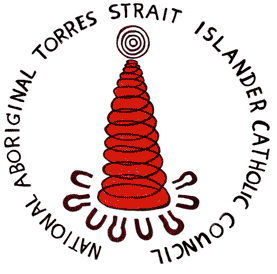
National Aboriginal and Torres Strait Islander Catholic Council
Aboriginal and Torres Strait Islander Sunday Resources
<<< NATSICC Home
The Harvest is Plentiful,
but the labourers are few
Get up! Stand up! Show up!
Aboriginal and Torres Strait Islander Sunday Resources
3 July 2022
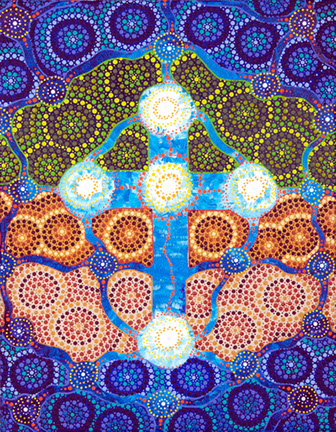
Every year, on the first Sunday in July, Catholics come together across Australia to acknowledge and celebrate the gifts of Australia’s First Peoples in the Catholic Church.
This year is particularly important because of the need to reconnect due to the COVID 19 Pandemic and its impact on the ways in which we interacted and made contact with one another.
For 2022 NATSICC is asking for everyone to come together, but also consider practical ways in which they can support Australia's First Peoples - not just for this special day, but every day.
Artwork
Mumeri was created by Dr Lisa Buxton in August 2013 to celebrate the Catholic Archdiocese of Sydney’s inaugural Aboriginal and Torres Strait Islander Mass held at St Mary’s Cathedral. The theme for the Mass ‘Holy Spirit in this Land’ was captured in the artwork through the use of Aboriginal and Catholic symbolism.
Letter to Parishes and schools from Bishop Charles Gauci
"I am pleased to recommend to parishes and schools the 2022 Aboriginal and Torres Strait Islander Sunday resources that have been compiled by the National Aboriginal and Torres Strait Islander Catholic Council (NATSICC). These resources have helped us to celebrate the gifts of our First Australians in the Church for many years.
Aboriginal and Torres Strait Islander Sunday Resource Booklet
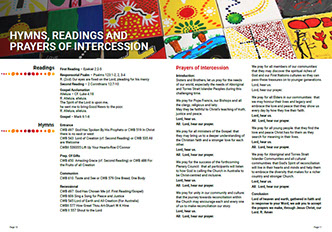 The 24 page, full colour booklet for 2022 has been designed to help Schools, Parishes and organisations celebrate the gifts of First Australian Catholics.
The 24 page, full colour booklet for 2022 has been designed to help Schools, Parishes and organisations celebrate the gifts of First Australian Catholics.
The NATSICC Liturgy team has compiled prayers, Liturgy suggestions, homily notes and statistics that will enhance and enrich your celebration.
Additionally, there is a practical activity that calls for Catholics around Australia to knit / crochet blankets for the NATSICC Palliative Care package program.
Booklet download - Web Version | Print Ready
Poster
Click on the image (left) to download a high resolution version of the 2022 Aboriginal and Torres Strait Islander Sunday Poster.
Youth Activities
We have developed the 2022 Youth Activities in collaboration with Andrew Kirkpatrick (Edmund Rice Education Australia). The activities provide teachers with projects that will encourage students to research role models, seek the truth of Australia's history with First Nations Peoples and expand their knowledge of the World's oldest continuing culture.
Setting the Scene and Learning Outcomes
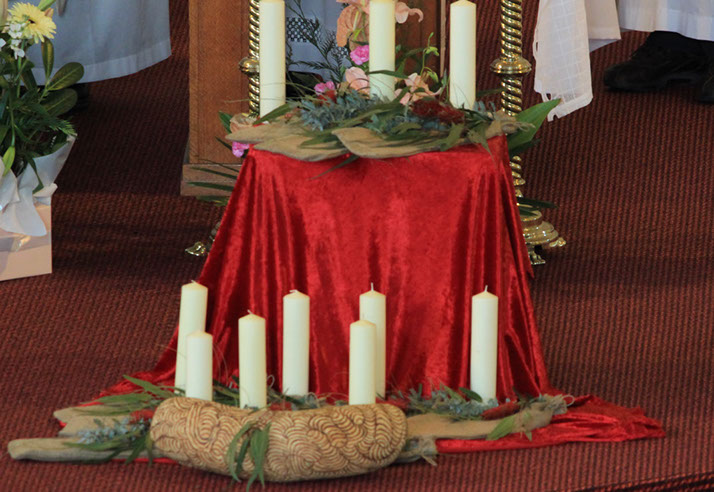 Setting the SceneWe encourage educators/schools to create and provide a sacred space as a form of liturgy. This space provides a focal point for learning and visual cues for contextualising concepts of culture and ecology. Look around your local area for inspiration to create your Sacred Space. You could use water, gum leaves, a table runner/cloth with Aboriginal and Torres Strait Islander artwork, battery operated candle, a paperbark coolamon (made with bark from a Paperbark and tied with grass string), a branch or even rocks Learning Outcomes:• Students are to reflect on the 2022 theme The Harvest is plenty, but the labourers are few. Get up! Stand up! Show up! and contextualise the theme to not only their own lives but to the wider community. A key outcome is the realisation that every individual has a role to play and that we all contribute to greater actions.• Students to gain historical insight into some of the challenges faced by Aboriginal & Torres Strait Islander people and identify the many advocates and allies that stood up to fight for better outcomes and more positive future for their people.• Students will understand and consider opportunities they have in 2022 to Get up! Stand up! Show up! in their own community and make a difference.• Students will have the opportunity to learn from each other by working in solidarity with their peers and community groups, learning as a way of moving forward.
Setting the SceneWe encourage educators/schools to create and provide a sacred space as a form of liturgy. This space provides a focal point for learning and visual cues for contextualising concepts of culture and ecology. Look around your local area for inspiration to create your Sacred Space. You could use water, gum leaves, a table runner/cloth with Aboriginal and Torres Strait Islander artwork, battery operated candle, a paperbark coolamon (made with bark from a Paperbark and tied with grass string), a branch or even rocks Learning Outcomes:• Students are to reflect on the 2022 theme The Harvest is plenty, but the labourers are few. Get up! Stand up! Show up! and contextualise the theme to not only their own lives but to the wider community. A key outcome is the realisation that every individual has a role to play and that we all contribute to greater actions.• Students to gain historical insight into some of the challenges faced by Aboriginal & Torres Strait Islander people and identify the many advocates and allies that stood up to fight for better outcomes and more positive future for their people.• Students will understand and consider opportunities they have in 2022 to Get up! Stand up! Show up! in their own community and make a difference.• Students will have the opportunity to learn from each other by working in solidarity with their peers and community groups, learning as a way of moving forward. Activity 1: Reflect
Students are encouraged to reflect upon the theme of Aboriginal and Torres Strait Islander Sunday:
The Harvest is plentiful;, but the labourers are few.
Get up! Stand up! Show up!’
Key points for reflection:
- What does it mean to:
- them,
- their family
- their school
- their local community
- the wider Church community
- Gospel from which the theme is based: Matthew 9:37
- NAIDOC theme (Get up! Stand up! Show up!) - https://www.naidoc.org.au/awards/current-theme
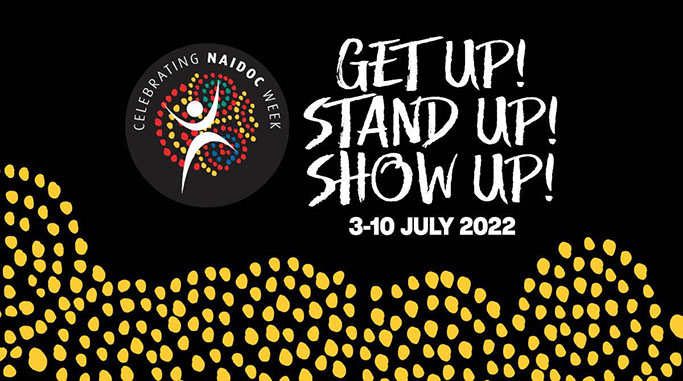
- What does it mean to:
Activity 2: Finding examples of people ‘Getting up! Standing up! and Showing up!
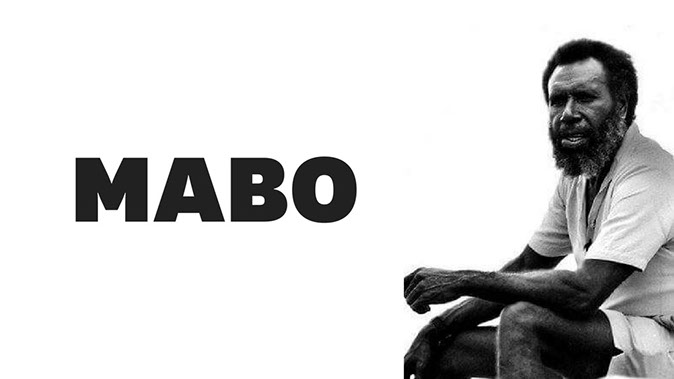
Students are to continue the reflection journey by identifying specific examples in Australia’s history where both Aboriginal &/or Torres Strait Islanders as well as non-indigenous Australians have had to fight for a cause or for justice. In other words, when did people have to get up, stand up and show up? What was the cause? Who was the person? What was the outcome? This could be displayed in a simple table as a starting point. Specific examples to have students start to think about the topic (but not limited to) include:
• Eddie Koiki Mabo (Native Title)
• The advocates of the Aboriginal Tent Embassy
• Paul Keating’s Redfern speech
• Kevin Rudd’s Federal Apology
• The Wave Hill Walk Off
Activity 2: Stretch Activity
Explore the concept ‘Getting up! Standing up! and Showing up! from an integral ecology standpoint – when have people stood up to protect and advocate for natural world? There are a number of resources that students could explore, including Pope Francis’ Laudato Si and the Australian Catholic Bishops Conference Social Justice Statement 2021-22
Examples:
• Return of 52,000 hectares of land to the Larrakia people
• Aboriginal Opposition to the Adani Coal mine
• 160,00 hectares returned to Kuku Yalanji people on path to reconciliation”
Links:
1. https://www.npr.org/2021/10/05/1043256101/indigenous-australians-get-land-back-queensland
2. https://statements.qld.gov.au/statements/93360
• World Heritage Area renamed K’gari after a long campaign by Butchulla People.
https://statements.qld.gov.au/statements/93269
• Indigenous Ranger Programs.
https://www.niaa.gov.au/indigenous-affairs/environment/indigenous-ranger-programs
• Seed Mob – Australia’s first Indigenous youth climate network. Website: https://www.seedmob.org.au/
Activity 3: Delving Deeper
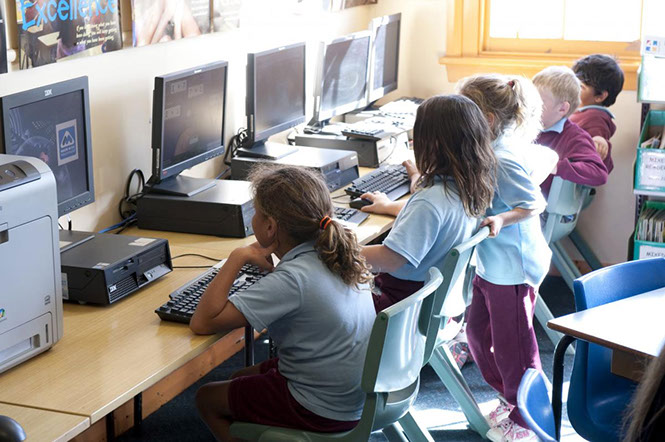
Students extend on the previous task by selecting one case study and conduct some research to highlight and further develop their understanding of it.
Depending on the age of the participants, the findings could be shared on a Powerpoint, news article, poster etc.
Activity 4: Challenges facing First Australians today
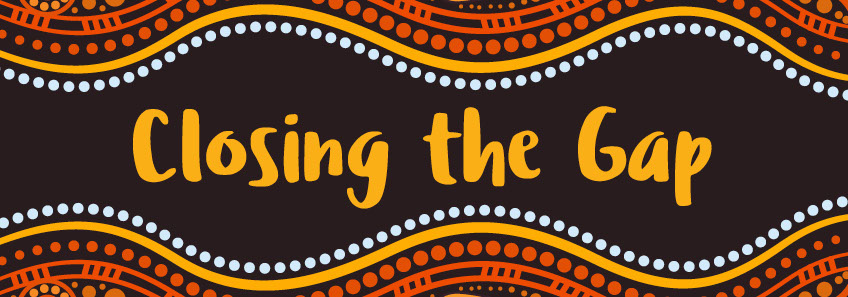
Students are to look into the current and future issues impacting Aboriginal and Torres Strait Islander people. Where have these issues stemmed from? What has been done in the past to counteract them? What is continuing to happen? Is there any progress? These are questions students may consider when exploring this topic. Students are encouraged to think forward about the impacts of today and what could happen if nobody steps up to advocate and fight for justice in these issues.
Specific issues to have students start to think about the topic (but not limited to) include:
• First Nations voices being heard (Uluru Statement from the Heart)
• Closing the Gap (health and educational inequalities)
• Sovereignty / Treaty
• January 26
• Rising Sea Levels and the impact on the communities in the Torres Strait Islands
Activity 5: Getting involved!
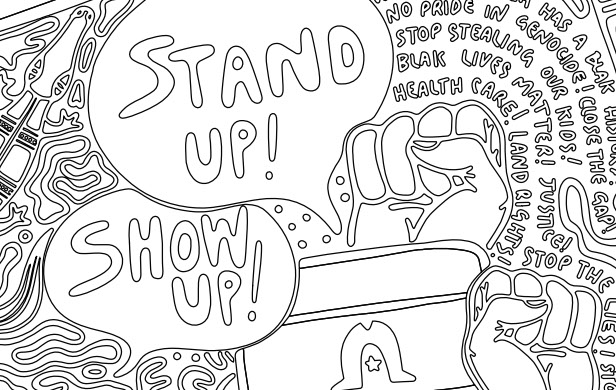
Following on from Activity 4, students are to explore opportunities they have as individuals to get involved in advocating and taking action for the selected issue. Ideally, this activity could be done in collaboration with peers.
Students in groups can form a Yarning Circle to discuss their thoughts and their background understanding from the previous activities. This provides an opportunity to collaborate and learn from each other and empathise with other perspectives.
Activity 6: Practical Activity
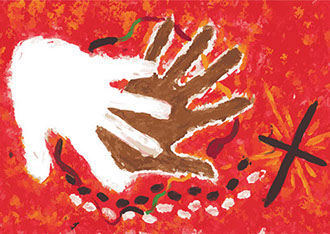
Once in small groups, students start to explore opportunities they can enact on. How can they get up, stand up, show up? A couple of ideas students can use but are not limited to include:
• Students ask if they can learn from Traditional Custodians of the Country they live on and community members?
• Is there an event within the local community they can be a part of?
• Can they write a letter to a local member of parliament voicing their concerns?
• Can they advocate at a school level, coordinating a small event within that context?
• Students and their families come together to knit or crochet blankets for the NATSICC Palliative Care program (https://www.natsicc.org.au/palliative-care-packages.html)
• Are there any native seed planting groups hosting events in their local area?
• Seek out your local Aboriginal Catholic Ministry and become involved with their programs or initiatives
• Attend Mass and be present on Aboriginal and Torres Strait Islander Sunday
These are practical activities they can be a part of and physically make a difference towards working the harvest.
Multimedia Resources
Virtual Acknowledgment
This Acknowledgment of Country and presentation for use in Parishes and Schools will set the scene for your Aboriginal and Torres Strait Islander Sunday Celebrations is currently being prepared. It is suited for Parishes, Schools and Organisations who have been unable to invite a Traditional Custodian to provide a Welcome to Country. You can either stream the video using the link below, or download to your local machine in readiness for you celebration by clicking here. The file size is 111mb.
Didgeridoo Music
As a way of enhancing and enriching your celebrations for Aboriginal and Torres Strait Islander Sunday, NATSICC has engaged with young Catholic, Kuku Yalanji and Yidinji man Luke Stevens to produce a series of Didgeridoo tracks.
The NATSICC Liturgy Resource for Aboriginal and Torres Strait Islander Sunday makes suggestions of hymns that could be used for the Entrance and Communion parts of the Mass replacing the Entrance and Communion Antiphons in the Roman Missal. Each Didgeridoo track has a suggested application – Welcome/Entrance, Preparation of Gifts/Communion reflection and Farewell/After Mass – however we encourage you to use them as per your needs during Aboriginal and Torres Strait Islander Sunday within your Parish.
An example for using this Didgeridoo music is to have a track playing as welcome music to set the scene when parishioners are arriving and being welcomed into Mass, prior to the entrance procession and Hymn. The Didgeridoo music serves to provide spiritual reflection for parishioners on Aboriginal and Torres Strait Islander Sunday at the following points:
Welcome/before Mass: Entrance Track (2:33mins)
Preparation of Gifts / Communion Reflection: Communion Track #1 (2:45mins) or Communion Track #2 (2:24mins)
Farewell/After Mass (as people are packing up & leaving): Recessional Track (4:43mins)
Extra tracks: Spare #1 (4:06mins) & Spare #2 (4:46mins)
About the Artist
" My name is Luke Stevens and I am a proud Kuku Yalanji and Yidinji man from Cairns, Far North Queensland. As a young Indigenous Catholic man, my faith has taken me on a journey where I have enjoyed finding unique ways to sharing faith with others.
My name is Luke Stevens and I am a proud Kuku Yalanji and Yidinji man from Cairns, Far North Queensland. As a young Indigenous Catholic man, my faith has taken me on a journey where I have enjoyed finding unique ways to sharing faith with others.
Through using my culturally traditional gifts I have been able to express myself and I love that I have been blessed to share my faith with others"
Torres Strait Islander Hymns
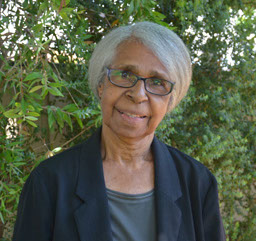 Written and performed by our very own Torres Strait Islands Councillor Dolly McGaughey, these beautiful hymns evoke the spirit of the Islands.
Written and performed by our very own Torres Strait Islands Councillor Dolly McGaughey, these beautiful hymns evoke the spirit of the Islands.
The Roman Catholic Church began its ministries in the Torres Strait when Pope Leo XIII requested that the Sacred Heart Fathers establish a Mission in New Guinea. It was decided among the Fathers that the setting up and servicing of such a Mission would be better facilitated if a site was chosen in the Torres Strait. Parishes are now established at (Sacred Heart) Thursday Island, (Holy Family) Horn island, (St Joseph the Worker's Church) Hammond Island and (St Stephen's) Bamaga.
Hymns
- To You Oh Lord (Entrance) | Arrangement
- We Bow in Your Name (Communion) | Arrangement
- Because he is God (Communion) | Arrangement
Homily Notes
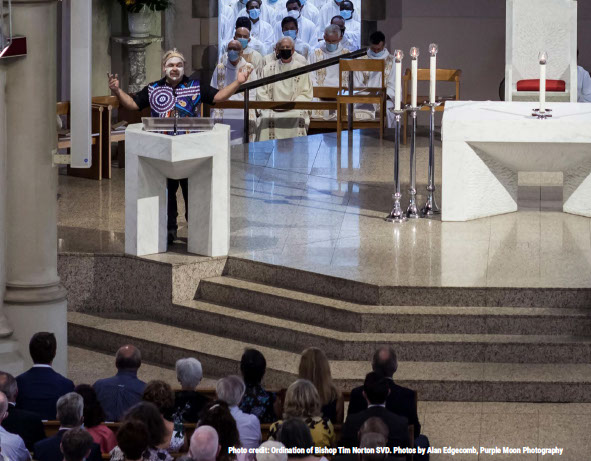
Bishop Tim Norton has provided the Homily Notes for this year's celebration:
Luke 10:1-9
The Harvest is plentiful, but the labourers are few
Today we celebrate the fact that God has always been present with, and loved, our First Peoples in Australia, a love that God extends to all First Peoples across the world.
I was working in Italy last year when I was appointed auxiliary bishop in Brisbane. When I was asked about any preferences I had for the ordination liturgy, I knew that I wanted truly ‘Australian’ symbols and rituals, but I was relatively powerless to put anything significant in place as I was so far away.
I wanted a Pectoral Cross and Vestments decorated in an Aboriginal design. I knew I wanted to be ‘Smoked’ as a symbol of cleansing at the beginning of my Episcopal Ministry. Various people at the Brisbane end began diligently working on this by contacting First Nations people and others who could help out.
I was deeply touched and strengthened by the results, which included the vestment design being transferred also to the Mitre, two Pectoral Crosses with Sacred Land from Lake Mungo in their centre, and a Smoking Ceremony inside the Cathedral that included me and all the bishops who entered behind me. I believe God was very happy with that!
What amazed me was that so many people were willing to act on my behalf to profile the symbols and rituals of First Nations people in the Ordination Ceremony. There was an enormous amount of good will and creativity that was made immediately available simply because people were asked to help.
In today’s Gospel Jesus tells us to pray to ask the Lord of the harvest to send out labourers into his harvest. If we truly want more labourers for the vineyard that produces the Good News of life in abundance for all, the same vineyard that also tells the Jesus story through the eyes and hearts of Aboriginals and Torres Strait Islanders, then praying is only one way to do this. We also need to make a deeper commitment to our sisters and brothers through being labourers in the vineyard.
NAIDOC has a theme this year of ‘Get up, Stand up, Show up’. Labourers for the harvest of the Lord do exactly that – they labour or work for the Lord, and that can take the form of getting up and being active. There is much we can do as Christian people to address issues that affect our First Nations sisters and brothers.
I have my story of asking others for help to profile Aboriginal and Torres Strait Islander Culture – the world’s oldest continuing culture - during my Episcopal Ordination. What is your story? When were you active with issues that affect First Nations people? And if you don’t have a story yet of being a labourer in that vineyard, then get up, stand up and show up to places where issues of First Australians are being addressed. People are just waiting to be asked. The harvest is plentiful but the labourers are few.
Our voices on.........
A page that shares NATSICC's points of view on various important topics, including the Environment, the Indigenous Voice to Parliament and more.
NATSICC Retreat Videos
One of the ways that you can enhance and enrich your celebration and understanding of Aboriginal and Torres Strait Islander Sunday is to watch the presentations from the recent NATSICC Virtual Retreat. You can view them prior to the celebration as a way to prepare either individually, or ideally as a group to facilitate discussion and sharing around the topic covered.
Caring for our Common Home -
Bishop Columba Macbeth-Green
Aboriginal Spirituality - Dulcie Isaro
Let us Dream - The Path to a better future -
Fr Steve Fletcher
I am the vine...you are the branches - Fr Dave Tremble
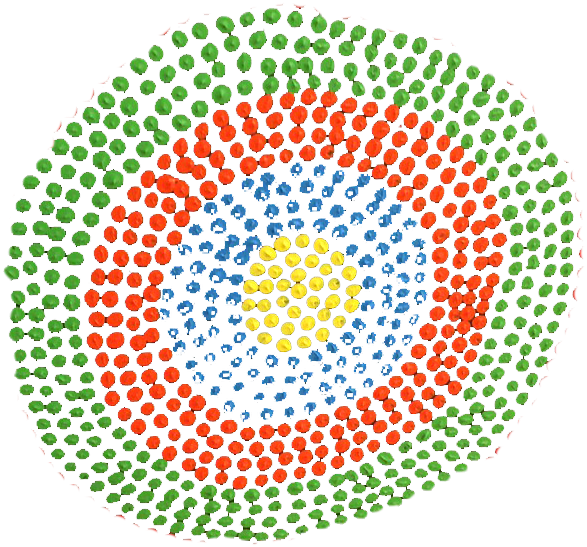
National Aboriginal and Torres Strait Islander Catholic Council
'The peak Indigenous advisory body to the Catholic Church'
80C Payneham Rd.
Stepney SA 5069
www.natsicc.org.au | craig@natsicc.org.au | 08 8363 2963
